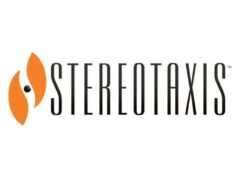An abstract study, STOP-VT, presented at the European Society of Cardiology (ESC) Congress has shown that remote magnetic navigation (Niobe Remote Magnetic Navigation System, Stereotaxis) may provide additional benefits to catheter ablation for the treatment of scar-related ventricular tachycardia.
The study, which is the first multicentre, global prospective trial to evaluate remote magnetic navigation for the treatment of ischaemic ventricular tachycardia, reviewed the use of an irrigated magnetic catheter in 38 patients with ischaemic ventricular tachycardia. The primary endpoint was to prevent recurrence of the ventricular tachycardia.
On average, the procedure time was 255.4 minutes, the total fluoroscopy time was 15.1 minutes, and the average radiofrequency time required to ablate the ventricular tachycardia was 35.1 minutes with a power of 42.6W. In nearly all of the patients (92.1%), the ventricular tachycardia was successfully ablated and could not be induced. The acute success results are 10-15% higher than similar published studies using conventional ablation techniques. Only one patient was crossed over to manual catheter ablation and ablation remained unsuccessful in this patient, and no major adverse events were reported.
Investigators Neuzil et al concluded: “Our results for remote navigation mapping are promising in this very difficult-to-treat arrhythmia. Additional follow-up of the remaining patients should provide a clearer understanding of the long-term effects of treating ventricular tachycardia with magnetic navigation.
Lead investigator Petr Neuzil, head of cardiology and director of the cardiac arrhythmia service at the Na Homolce Hospital in Prague, Czech Republic, said: “Ventricular tachycardia is one of the most challenging arrhythmia facing electrophysiologists due to complex anatomy, the sensitive nature of ventricular tissue, and potentially lethal outcomes. Catheter ablation of ventricular tachycardia, one of the fastest growing electrophysiology procedures globally, requires the delivery of robust lesions for clinical success. The main advantage of Stereotaxis [Niobe Remote Magnetic Navigation System], for the treatment of ventricular tachycardia is the precise mapping and identification of the critical diseased portions of the heart that allows physicians to perform ablation in a more effective way. The results of the trial exceeded our expectations, both in terms of acute outcomes as well as overall safety.”
The remote magnetic navigation system used in the study uses computer-controlled, externally applied magnetic fields to govern the motion of the working tip of the catheter or guidewire. The aim is to improve navigation, reduce procedure time, and reduce X-ray exposure.
Michael Kaminski, president and CEO of Stereotaxis, said: “Ventricular tachycardia is a potentially lethal heart rhythm disorder that requires highly precise mapping and effective lesion delivery for successful treatment. The significant placement of the STOP-VT study results at the world’s largest cardiology meeting reinforces the exceptional value that Stereotaxis brings to this complex life-saving procedure.”









